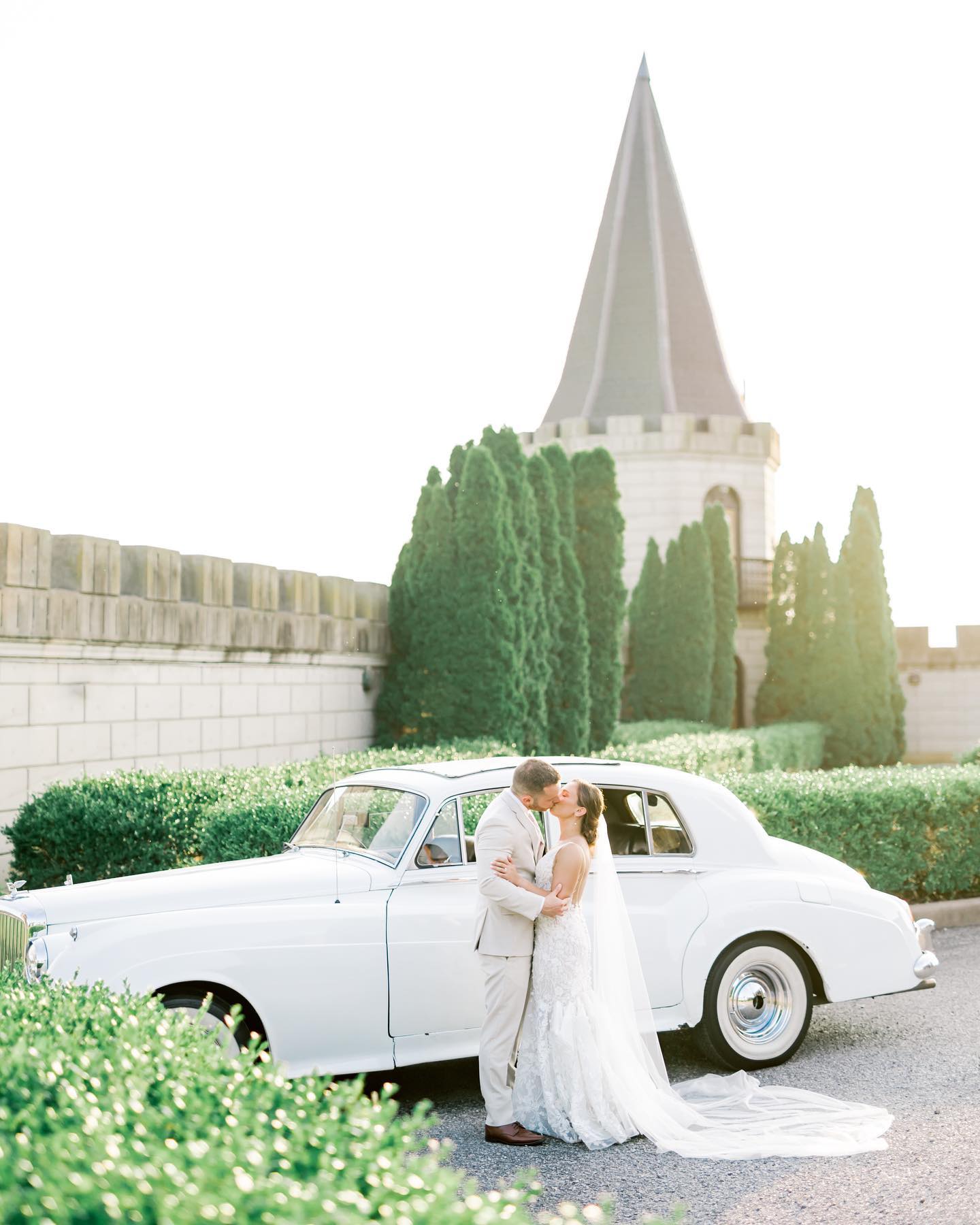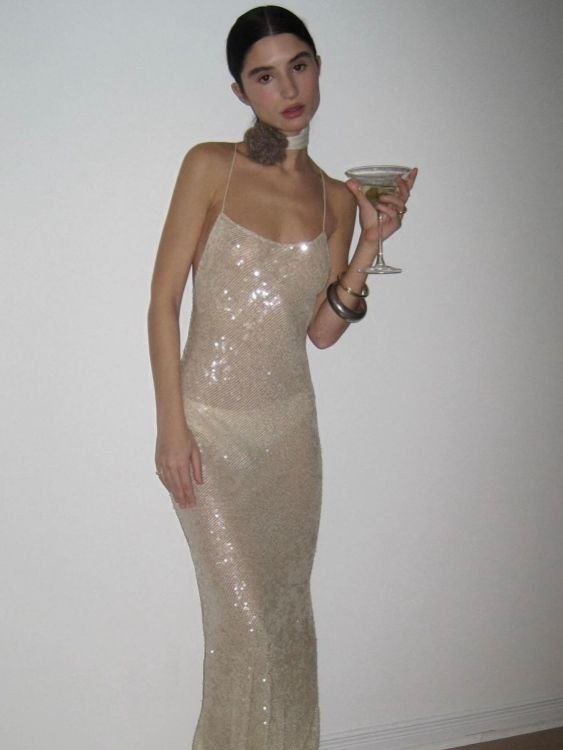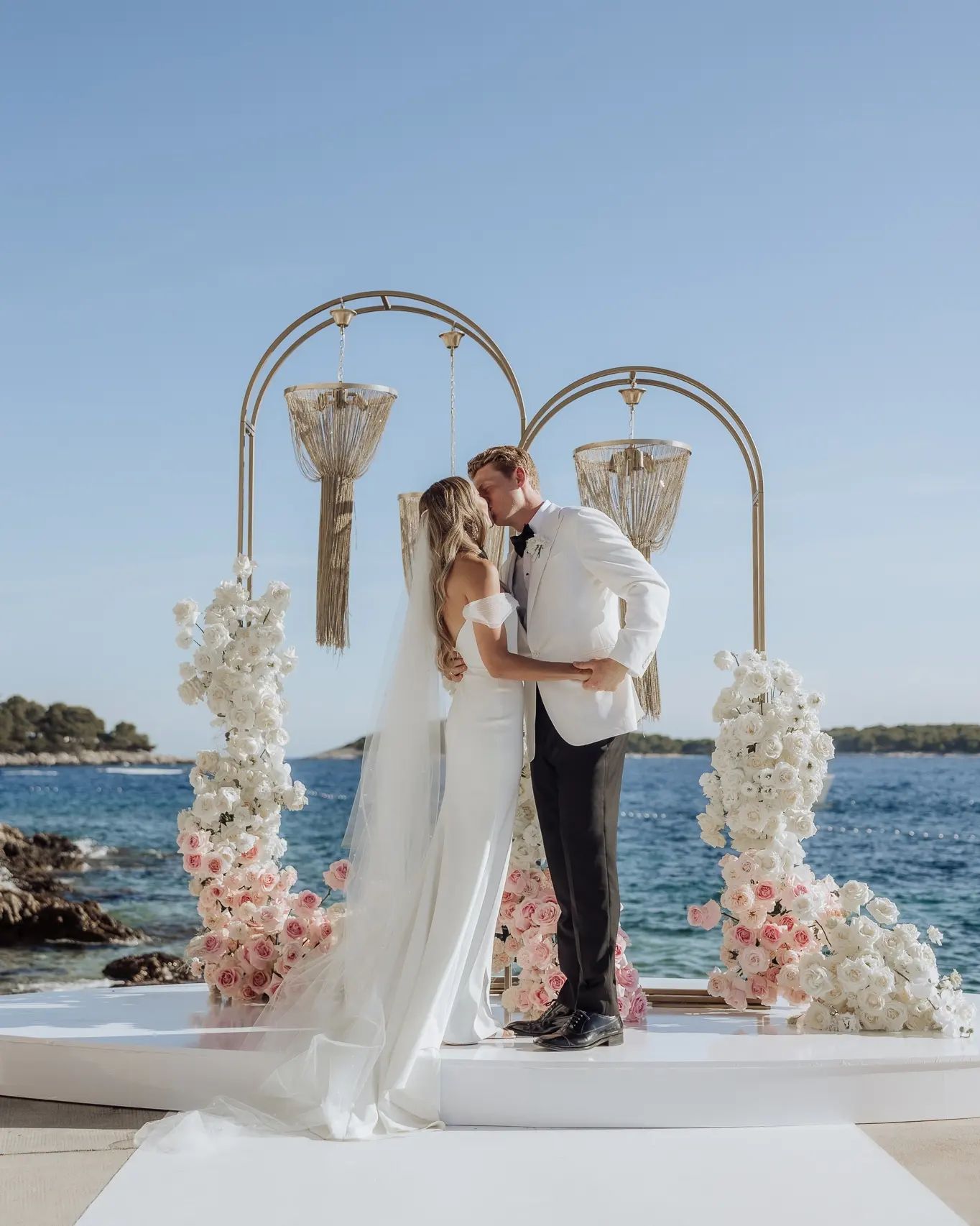17 Chinese Wedding Traditions and Their Significance
- Author: Natali Grace Levine
- Reading time: 6 min 41 sec
- Publication date: 11/03/2024
- Updated: 01/07/2025
- The Role of the Chinese Zodiac in Choosing Wedding Dates
- Setting the Wedding Date According to Auspicious Dates
- Traditional Chinese Engagement: The Betrothal Ceremony
- Betrothal Gifts and Their Symbolic Meanings
- Chinese Wedding Invitations: Symbolism and Tradition
- Hair Combing Ceremony: A Blessing for Good Fortune
- The Bride’s Farewell to Her Family: The Crying Ritual
- The Wedding Procession: A Festive Journey to the Groom’s House
- Crossing the Fire Pan: A Step Toward a Prosperous Future
- Chinese Wedding Attire: Qipao, Dragon Robes, and Colors of Luck
- The Door Games: Fun Challenges for the Groom
- The Tea Ceremony: Honoring Family and Elders
- Red Envelopes and Gifts of Good Luck
- The Bed Setting Ceremony: Preparing for Fertility and Happiness
- Chinese Wedding Banquet: Food as a Symbol of Prosperity
- Hairpin Giving Tradition: A Symbol of Lifelong Commitment
- The Three Bows Ceremony: Respect and Devotion
Chinese weddings are rich with history, meaning, and symbolism, celebrating the union of two individuals while honoring family ties, cultural heritage, and values. Each tradition, from the careful selection of an auspicious date to the joyful tea ceremony, reflects thousands of years of customs rooted in Confucian values, respect for elders, and the importance of harmony in life. Every step of the wedding process is filled with symbols that invite blessings of happiness, prosperity, and long-lasting love for the couple.
While some practices have adapted to modern times, many families continue to embrace these traditions, blending them seamlessly with contemporary elements to honor the past while celebrating new beginnings. This article explores the fascinating customs and rituals of a traditional Chinese wedding, shedding light on each tradition’s unique purpose and beauty.

The Role of the Chinese Zodiac in Choosing Wedding Dates
In Chinese culture, astrology holds significant sway, especially for auspicious events like weddings. The Chinese zodiac is a twelve-year cycle where each year is represented by an animal sign with unique traits. Couples consult fortune-tellers to determine not only compatible dates but also favorable times of day based on the zodiac. For example, if the bride is born in the Year of the Rabbit and the groom in the Year of the Dragon, they may choose a day that aligns harmoniously with both signs to bring blessings and avoid any potential conflicts.
Setting the Wedding Date According to Auspicious Dates
The selection process for wedding dates is meticulous, involving consultations with the lunar calendar, numerology, and family elders. For instance, dates with the number “8” are highly desirable as the pronunciation of “eight” sounds like “prosperity” in Chinese. Beyond numbers, the day of the lunar month is crucial; even days are generally considered more favorable than odd ones for weddings. Families often consult almanacs that outline the most auspicious dates for weddings to ensure the couple embarks on their journey with luck on their side.
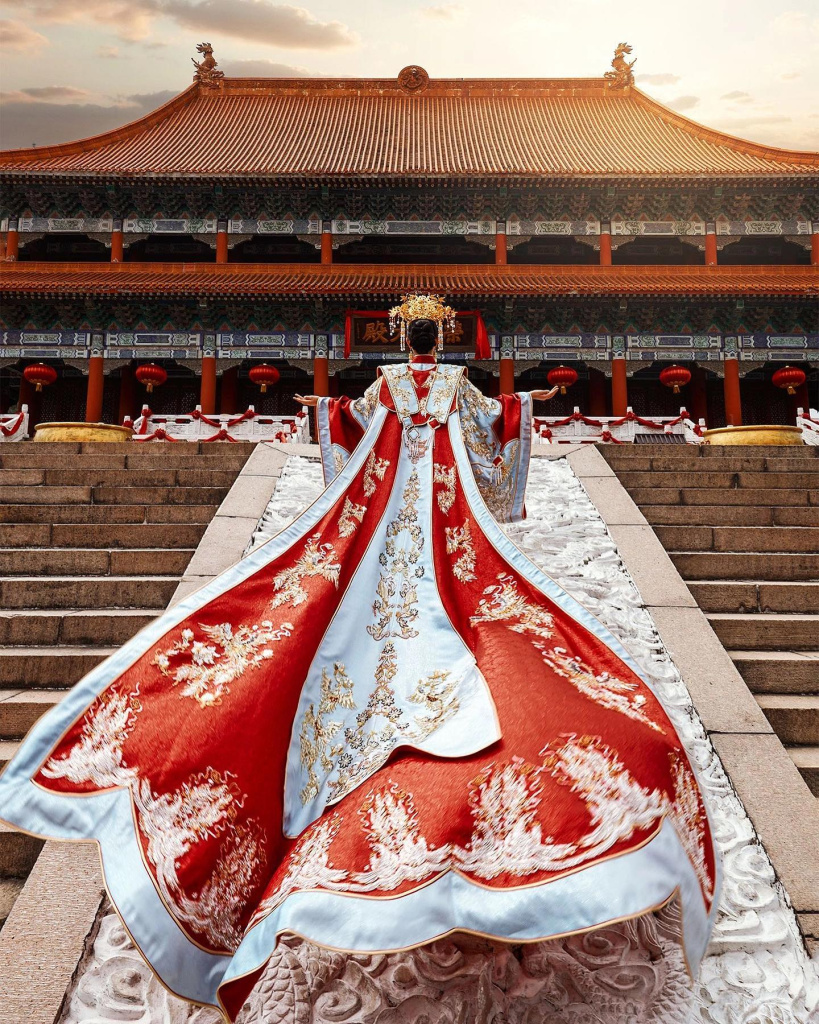
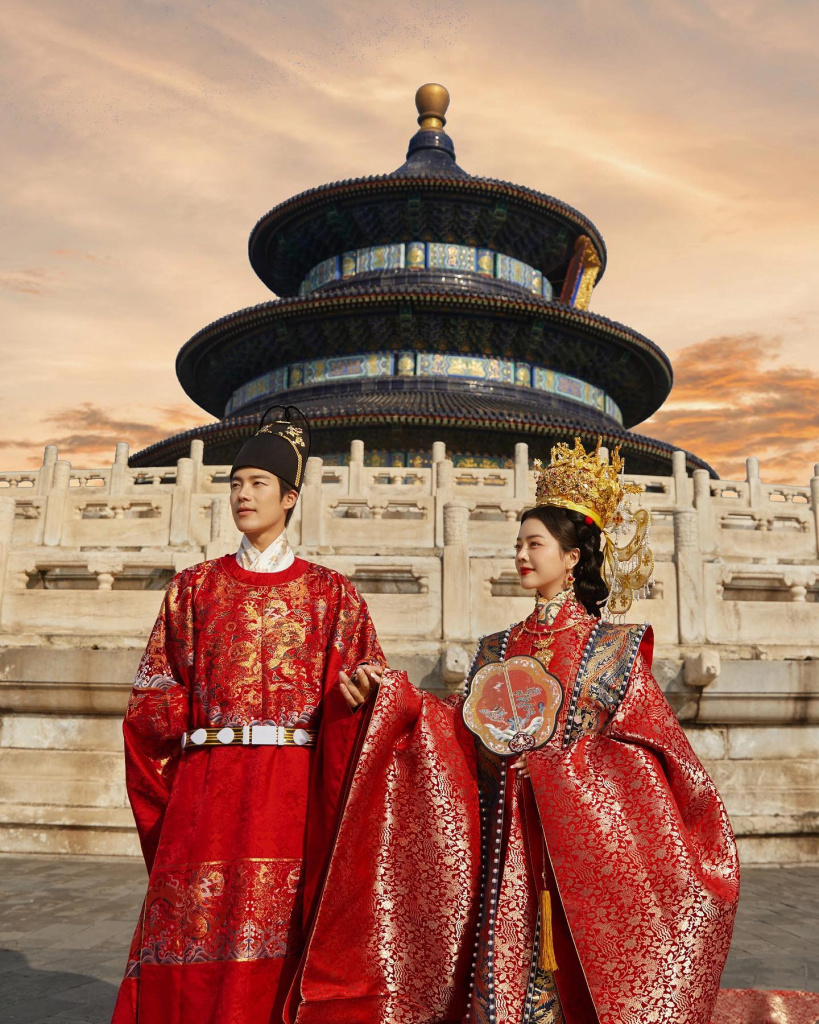
Traditional Chinese Engagement: The Betrothal Ceremony
The Guo Da Li (betrothal ceremony) marks the formal engagement between two families, going beyond just the couple. This ceremony, often attended by close relatives, is the groom’s family’s way of officially announcing their commitment. The groom’s family presents betrothal gifts, including foods like red dates and candies that signify sweet, fruitful unions. The bride’s family’s acceptance of these gifts shows their consent and satisfaction with the match, cementing the engagement in a respectful and traditional way.
Betrothal Gifts and Their Symbolic Meanings
Betrothal gifts, commonly known as bride price gifts, hold deep significance, symbolizing the groom’s respect and commitment. These gifts, carefully chosen to signify fertility, longevity, and prosperity, may include items like dried mushrooms and wine. Gold jewelry, particularly bangles and necklaces, is often gifted to the bride, symbolizing wealth, beauty, and protection. In return, the bride’s family may present the groom’s family with items that convey mutual respect and harmony, helping both families to bond before the wedding.


Chinese Wedding Invitations: Symbolism and Tradition
Chinese wedding invitations are as symbolic as the event itself, often decorated with vibrant red and gold hues that represent happiness and fortune. The traditional "Double Happiness" symbol, which appears on many invitations, conveys joy and togetherness. The formal language in these invitations honors familial bonds, ensuring that even the wording expresses a profound sense of respect. Each invitation is considered a blessing, as the guests’ presence and their gifts are believed to bring luck and fortune to the couple.
Hair Combing Ceremony: A Blessing for Good Fortune
This pre-wedding ritual, performed separately for the bride and groom, involves the symbolic act of combing their hair four times to signify different blessings. The first comb is a wish for harmony, the second for unity, the third for children, and the fourth for long-lasting wealth. The combing ceremony, often accompanied by incense and red candles, is a peaceful moment for the bride and groom to reflect on their commitment and future together, bringing an air of serenity before the festivities.
The Bride’s Farewell to Her Family: The Crying Ritual
Known as the “crying marriage,” this emotional tradition allows the bride to express her sorrow about leaving her family behind. In some regions, brides may start “crying” weeks before the wedding, often joined by her mother and sisters. This tearful display symbolizes love and loyalty to her family, and as a ritual, it’s thought to ensure a smooth transition from her natal home to her marital one. The crying ritual embodies the bittersweet moment of leaving one’s family while stepping into a new life.

The Wedding Procession: A Festive Journey to the Groom’s House
The wedding procession is a grand display where the groom’s family arrives to escort the bride to her new home. Often led by musicians and a parade of decorated cars, the groom’s journey is filled with music and celebrations. When he arrives, he is traditionally greeted by a “bride’s price” game, where bridesmaids set up playful challenges or even demand monetary offerings. This festive moment reflects the groom’s respect for his bride and willingness to overcome obstacles for her, often ending in a joyful reunion.


Crossing the Fire Pan: A Step Toward a Prosperous Future
Crossing the fire pan is a powerful ritual that serves as a rite of passage, cleansing the bride as she enters her new home. Fire is a potent symbol in Chinese culture, believed to drive away evil spirits and negative energies. This tradition, more common in southern China, involves the bride stepping over or walking around a brazier before she’s officially welcomed into her marital home. It’s a deeply spiritual ritual, meant to safeguard the bride and mark her as a symbol of prosperity in her new family.
Chinese Wedding Attire: Qipao, Dragon Robes, and Colors of Luck
Chinese wedding attire is rich in symbolism, with brides traditionally donning a red qipao or cheongsam, embroidered with phoenix or dragon motifs that signify balance and strength. The color red, widely believed to bring luck and happiness, is essential, while gold accents enhance the sense of wealth and fortune. Grooms often wear suits with similar colors or even a dragon robe symbolizing power. Throughout the day, the couple may change attire, incorporating traditional and modern styles to honor their heritage while celebrating their union.
The Door Games: Fun Challenges for the Groom
The door games are a lighthearted way for the bride’s friends to “test” the groom’s commitment and affection. Tasks can range from singing love songs to answering questions about the bride or even completing humorous physical challenges. These games create a joyful atmosphere, strengthening the bond between the couple and their friends. After completing the tasks, the groom offers a hongbao (red envelope) filled with money to “convince” the bridesmaids to let him enter, adding humor and camaraderie to the day.

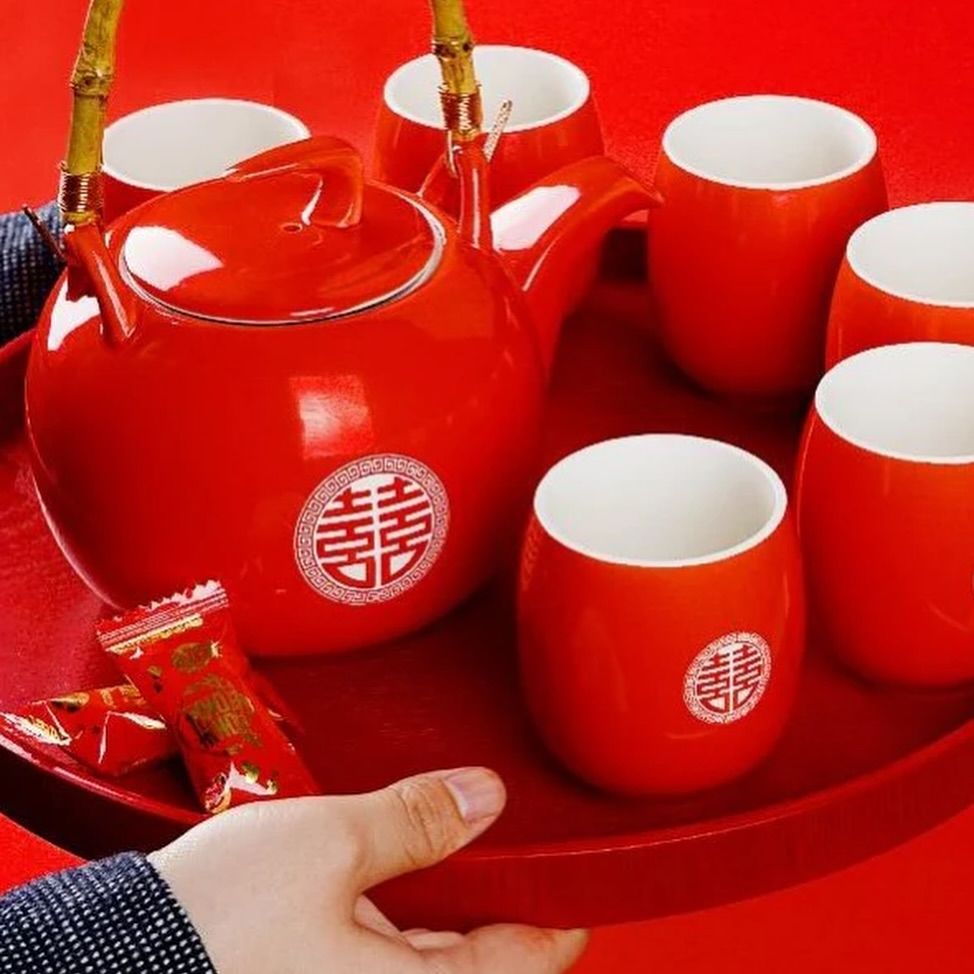
The Tea Ceremony: Honoring Family and Elders
The tea ceremony is a sacred ritual where the couple serves tea to their elders, who, in turn, bestow blessings and sometimes offer advice for a harmonious marriage. The tea used is often sweetened with red dates and lotus seeds, symbolizing fertility and a sweet union. The ceremony underscores the importance of family in Chinese culture, as the couple formally recognizes and honors their new extended family. It’s a meaningful moment of unity and respect, bringing the two families closer together.
Red Envelopes and Gifts of Good Luck
Guests attending the wedding often present hongbao (red envelopes) containing money to bless the couple with prosperity. The amount is usually an even number to symbolize harmony, and the presence of these red envelopes reinforces the theme of luck. The couple may also give smaller hongbao to children or unmarried guests, creating an exchange of blessings. The red envelope tradition is a cherished custom that reminds guests and family alike of the importance of mutual support and goodwill.

The Bed Setting Ceremony: Preparing for Fertility and Happiness
The bed setting ceremony is conducted by a family elder, often a woman with a happy marriage, who arranges the couple’s bed with auspicious items. Red linens, fruits like pomegranates, and lotus seeds are placed on the bed, symbolizing fertility and abundance. Small children may jump on the bed to bring good luck, which is seen as a way to encourage future blessings of offspring. This ritual embodies wishes for a fruitful and harmonious marriage, providing a foundation for the couple’s future.
Chinese Wedding Banquet: Food as a Symbol of Prosperity
The Chinese wedding banquet is an extravagant event where food and drink play a vital role in expressing prosperity and abundance. Every dish has a symbolic meaning, with ingredients like fish (signifying abundance) and lotus seeds (for fertility) taking center stage. Guests may be served a 10-course meal, reflecting the family’s generosity and gratitude. The wedding banquet is a time for families to celebrate, share blessings, and enjoy a culinary experience that emphasizes harmony, happiness, and the couple’s future together.


Hairpin Giving Tradition: A Symbol of Lifelong Commitment
This tradition of the hairpin gift goes back centuries and carries the idea of love and commitment. The groom presents a hairpin, usually decorated with intricate designs or jewels, to the bride as a promise of lifelong dedication. The hairpin, symbolizing maturity and loyalty, marks a sacred moment when the groom officially recognizes his bride as his life partner. In some regions, the hairpin may be presented during the engagement or just before the wedding, deepening the symbolism of the couple’s love.
The Three Bows Ceremony: Respect and Devotion
The Three Bows ceremony is a solemn tradition where the couple demonstrates their respect for heaven and earth, parents, and each other through a series of bows. The first bow is directed to the heavens and earth, acknowledging the forces that govern their lives. The second bow is to their parents, expressing gratitude for raising them and granting their blessings for the marriage. The final bow to each other symbolizes unity, loyalty, and the commitment to facing life’s challenges together as a married couple.












